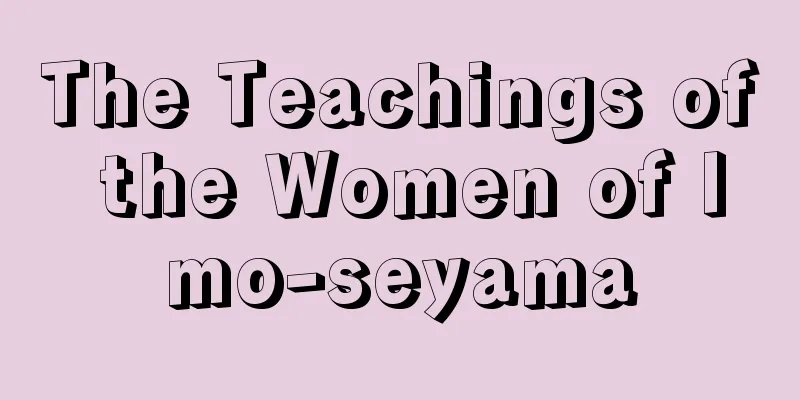Ginkgo Return - Ichogaeshi

|
A type of Japanese hairstyle that was popular among women from the end of the Edo period through the Meiji and Taisho periods. It first evolved from the gingko topknot, and was worn from ages ranging from 16 to those in their twenties. First, the hair remaining after removing the forelock, sideburns, and topknot was gathered into a root, which was then divided into two low topknots, one on each side, and tied with a topknot. It was popular as it was less extravagant than the Shimada topknot, and was worn by town girls and wives. When Western-style hairstyles became popular in the 1880s, it became popular among women working in the entertainment industry in downtown areas, and remained popular until the Taisho period. [Takeshi Endo] [Reference] |©Minoru Sugai Ginkgo Return Source: Shogakukan Encyclopedia Nipponica About Encyclopedia Nipponica Information | Legend |
|
江戸末期から明治・大正時代にかけて、女性の間で流行した日本髪の一種。最初は銀杏髷(まげ)から変化した髪形で、これを結った年齢はだいたい元服(16歳)から20代までであった。まず前髪、鬢(びん)、髱(たぼ)をとったあとの毛を集めて根とし、これを二分して左右に低い髷をつくってから元結で締めたものである。島田髷よりも大げさでないのが喜ばれて、町娘や内儀の間に用いられた。明治20年代に西洋式の束髪がはやるようになると、下町の水商売の女性などの間に人気をよんで大正まで流行した。 [遠藤 武] [参照項目] |©須貝 稔"> 銀杏返し 出典 小学館 日本大百科全書(ニッポニカ)日本大百科全書(ニッポニカ)について 情報 | 凡例 |
>>: Gastroenterology - Ichouka
Recommend
Daikonsou - Daikonsou
...However, the whole plant is sometimes used in ...
The Law of Compassion for Living Creatures
(1) The extension of the horses to the stables of...
Nobutoku Ito
Year of death: 15 November 1698 (13 October 1698) ...
Aurora (mythology) (English spelling) Aurora
… Greek goddess of dawn. Roman Aurora. Daughter o...
West Saxon dialect
…OE is divided into four dialects according to th...
PT - Potential transformer
Voltage transformers are used in power systems to ...
Izakovo culture
A culture from the early Neolithic period in the B...
Daigoji Temple
Located in Daigogaran-cho, Fushimi-ku, Kyoto City...
Othensve
...Population: 184,000 (1996). The name of the to...
Viscose - Viscose (English spelling)
It is a viscous orange-red liquid made by dissolv...
Ol'ga (English spelling)
Born: Around 890. Pskov Died in 969. Wife of Princ...
Consignment sales - Itaku bye bye
A securities company or commodity broker receives ...
Gergithus variabilis (English spelling) Gergithusvariabilis
…Both larvae and adults live on a variety of plan...
esquire
…A family coat of arms is a shield-shaped frame c...
Karasu-gane
〘 noun 〙 A type of usury in the Edo period. Money ...









